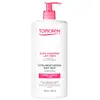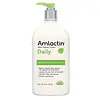What's inside
What's inside
 Key Ingredients
Key Ingredients

 Benefits
Benefits

 Concerns
Concerns

 Ingredients Side-by-side
Ingredients Side-by-side

Water
Skin ConditioningParaffinum Liquidum
EmollientGlycerin
HumectantCetearyl Ethylhexanoate
EmollientUrea
BufferingIsopropyl Isostearate
EmollientCera Alba
EmollientPalmitic Acid
EmollientStearic Acid
CleansingGlyceryl Stearate
EmollientPEG-100 Stearate
Isopropyl Myristate
EmollientPhenoxyethanol
PreservativePolyacrylamide
Polysorbate 60
EmulsifyingC13-14 Isoparaffin
EmollientCarbomer
Emulsion StabilisingChlorphenesin
AntimicrobialSodium Hydroxide
BufferingLaureth-7
EmulsifyingParfum
MaskingLimonene
PerfumingLinalool
PerfumingBenzyl Benzoate
AntimicrobialBenzyl Salicylate
PerfumingHexyl Cinnamal
PerfumingHydroxyisohexyl 3-Cyclohexene Carboxaldehyde
MaskingButylphenyl Methylpropional
PerfumingAlpha-Isomethyl Ionone
PerfumingHydroxycitronellal
PerfumingWater, Paraffinum Liquidum, Glycerin, Cetearyl Ethylhexanoate, Urea, Isopropyl Isostearate, Cera Alba, Palmitic Acid, Stearic Acid, Glyceryl Stearate, PEG-100 Stearate, Isopropyl Myristate, Phenoxyethanol, Polyacrylamide, Polysorbate 60, C13-14 Isoparaffin, Carbomer, Chlorphenesin, Sodium Hydroxide, Laureth-7, Parfum, Limonene, Linalool, Benzyl Benzoate, Benzyl Salicylate, Hexyl Cinnamal, Hydroxyisohexyl 3-Cyclohexene Carboxaldehyde, Butylphenyl Methylpropional, Alpha-Isomethyl Ionone, Hydroxycitronellal
 Reviews
Reviews

Ingredients Explained
These ingredients are found in both products.
Ingredients higher up in an ingredient list are typically present in a larger amount.
Glycerin is already naturally found in your skin. It helps moisturize and protect your skin.
A study from 2016 found glycerin to be more effective as a humectant than AHAs and hyaluronic acid.
As a humectant, it helps the skin stay hydrated by pulling moisture to your skin. The low molecular weight of glycerin allows it to pull moisture into the deeper layers of your skin.
Hydrated skin improves your skin barrier; Your skin barrier helps protect against irritants and bacteria.
Glycerin has also been found to have antimicrobial and antiviral properties. Due to these properties, glycerin is often used in wound and burn treatments.
In cosmetics, glycerin is usually derived from plants such as soybean or palm. However, it can also be sourced from animals, such as tallow or animal fat.
This ingredient is organic, colorless, odorless, and non-toxic.
Glycerin is the name for this ingredient in American English. British English uses Glycerol/Glycerine.
Learn more about GlycerinParaffinum Liquidum is also known as liquid paraffin. It is a type of highly refined mineral oil.
Like other oils, Paraffinum Liquidum has emollient properties. Emollients help soothe and soften the skin. By creating a barrier to trap moisture within, emollients help keep your skin hydrated.
Paraffinum Liquidum does not irritate the skin and is non-comedogenic.
Learn more about Paraffinum LiquidumWater. It's the most common cosmetic ingredient of all. You'll usually see it at the top of ingredient lists, meaning that it makes up the largest part of the product.
So why is it so popular? Water most often acts as a solvent - this means that it helps dissolve other ingredients into the formulation.
You'll also recognize water as that liquid we all need to stay alive. If you see this, drink a glass of water. Stay hydrated!
Learn more about Water